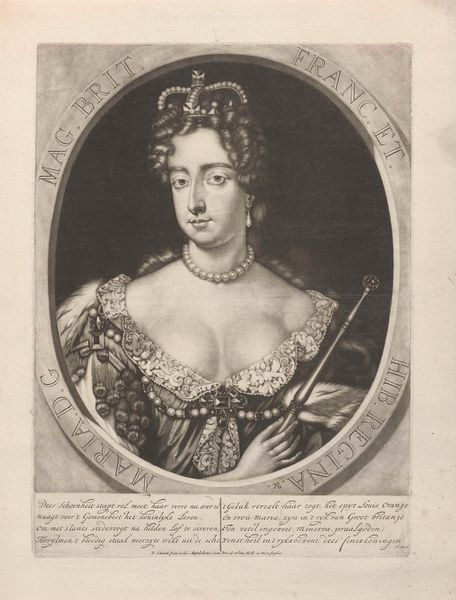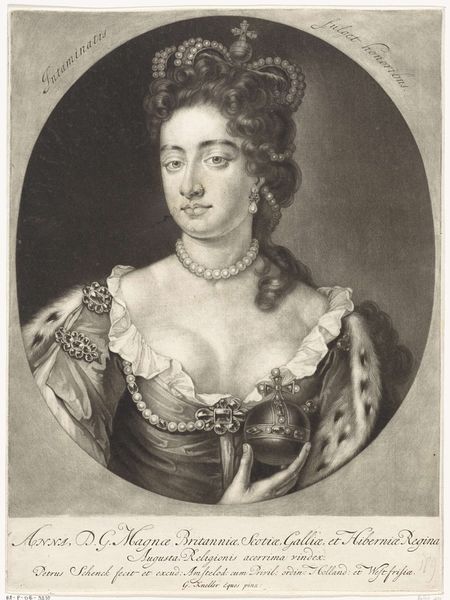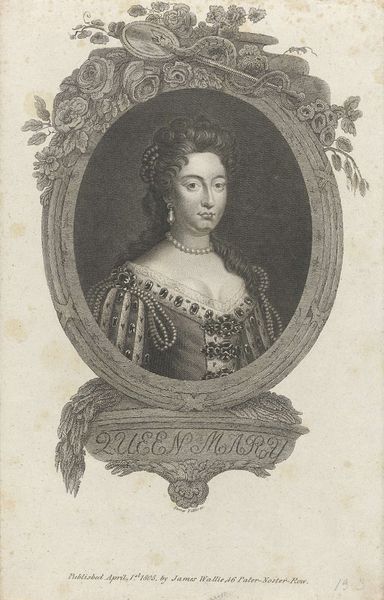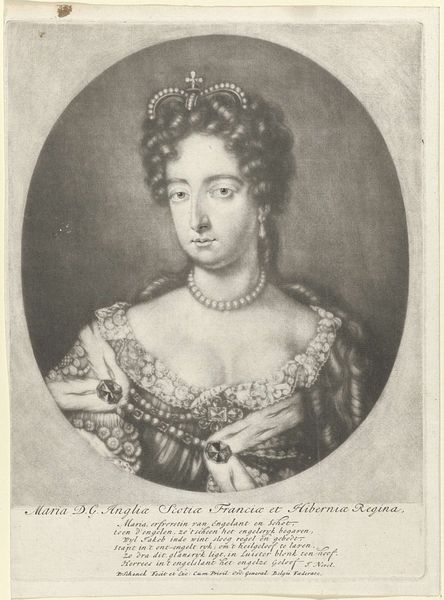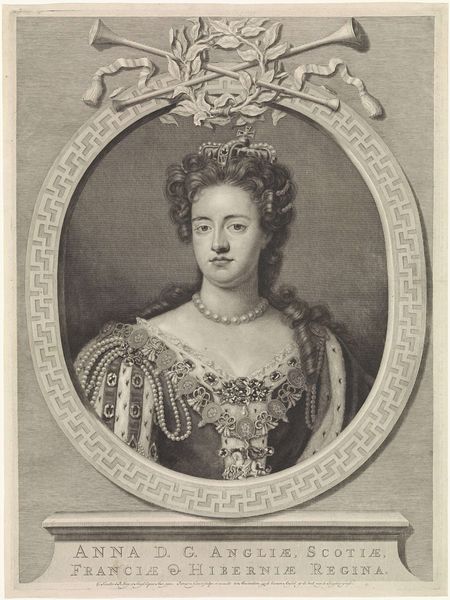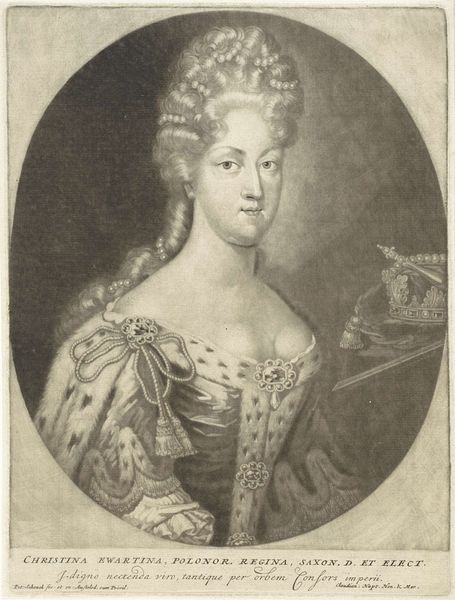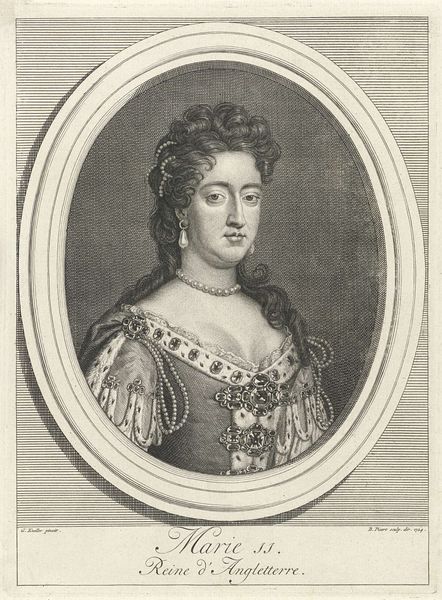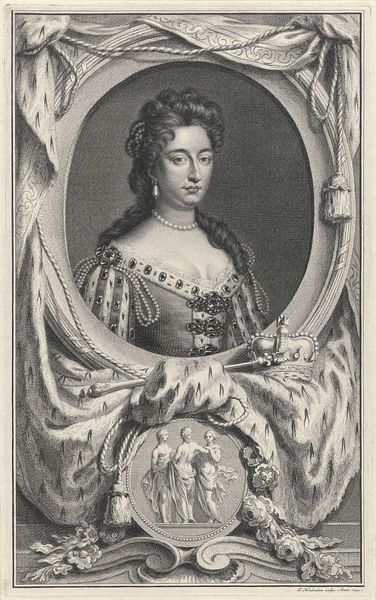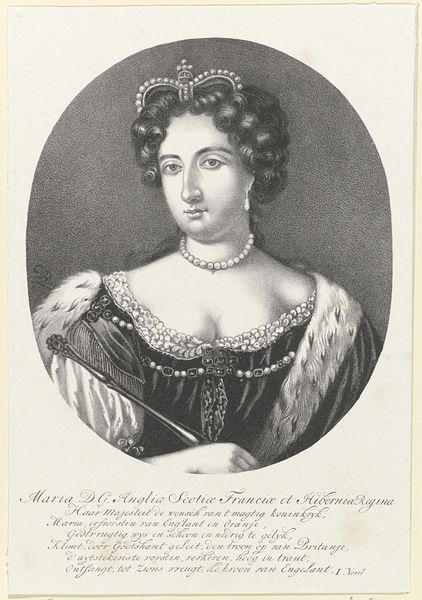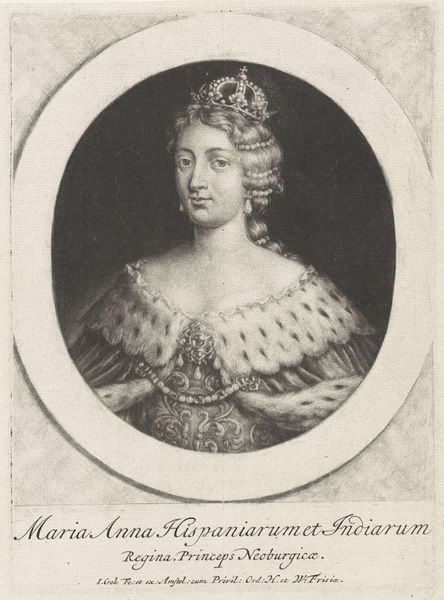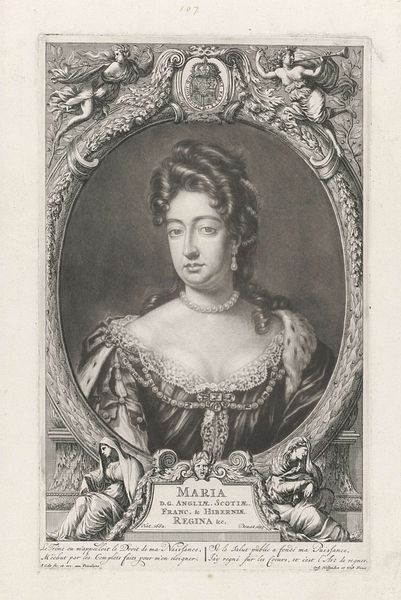
engraving
#
portrait
#
baroque
#
history-painting
#
early-renaissance
#
engraving
Dimensions: height 274 mm, width 174 mm
Copyright: Rijks Museum: Open Domain
Curator: What catches your eye about this print of Queen Anne by Pieter Schenk, made sometime between 1702 and 1713? Editor: Well, it's an engraving, which I find interesting in itself. It’s a portrait of power, obviously, with all the finery on display, but the textures created through the engraving process make the heavy fabrics and jewels almost tangible. How did the means of production influence the final artwork, do you think? Curator: Precisely! Consider the context: engraving was a reproductive technology. This print disseminated Anne's image, standardizing a visual representation of power. How does the material – the ink, the paper, the plate – and the labor involved influence its meaning? Is it a piece of "high art," or something else entirely? Editor: It challenges that distinction, doesn’t it? It’s not a unique painting, but the skill required to create the plate is undeniable. Was it considered craft or art at the time? Curator: That's the crux of it. Before photography, prints like these served a crucial propaganda role. We should think about how it was distributed and consumed. Who had access to this image? And what statement was Schenk making about craftsmanship and class through his production? Editor: So, looking at it through a materialist lens reveals the complex interplay between art, labor, and power at the time. The value isn’t just in the image itself, but in understanding how that image was made and disseminated within its social context. Curator: Exactly. Analyzing art through its material existence unveils production processes and socioeconomic factors shaping our understanding of visual culture. Thank you, it opened my eyes to its message. Editor: I've certainly learned how to assess an artwork's cultural meaning by analysing it from a manufacturing standpoint.
Comments
No comments
Be the first to comment and join the conversation on the ultimate creative platform.
